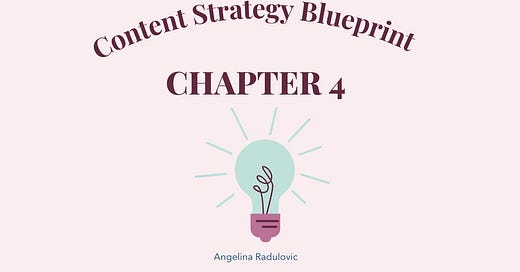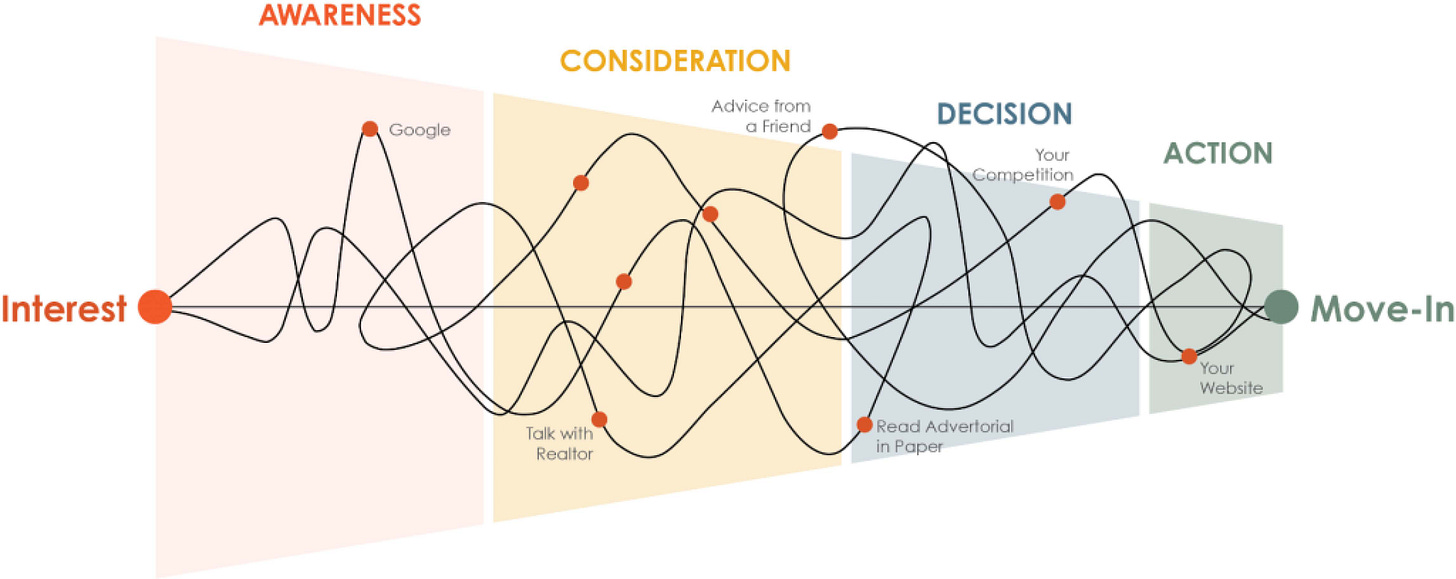Hi friends,
I owe you an apology - in my previous Chapters of Content Strategy Blueprint, I mentioned a workbook multiple times, but the link to it didn’t work. Thanks to my great paid subscribers, who let me know.
I’m sharing the link to the workbook at the end of this post. This workbook is actually essential - without trying out things from my book and applying them for yourself, you can’t experience the benefits of reading it. There are too many books out there we have never read and too many courses we have never applied to. I’m here to be your accountability buddy.
So, please reach out to me and let’s talk about how I can help you start and thrive with content marketing.
Hugs,
Angelina
You can find the links to the previous book chapters here:
All my paid subscribers get this book for free, and my other digital products get 50% off.
Chapter 4: Map Out Your Customer Journey
Have you ever wondered how businesses turn strangers into loyal customers?
You’ve met your ideal customer persona (your ICP, remember?) in Chapter 2, but the story doesn’t end there. You’ve probably heard of the expression “customer funnel” (or “customer journey”). It sounds fancy, but that’s just a list of steps each buyer goes from the first contact with your brand to the purchase (or further, post-purchase).
Here is how the sales funnel looks:
This is how it usually looks in the books. These funnels look much cleaner and more straightforward in drawings than in real life.
This is a more real-life look at the average customer journey.
Let’s peek behind the curtain and see what is behind these fancy expressions: prospective customers usually go to all the points before they whip out their credit cards.
Picture this:
Your ideal customer is lost in a content jungle, bombarded by sales pitches and “magic bullet” promises.
They’re confused, frustrated, and want a solution to their problems.
Sometimes, they aren’t even aware they have a problem (problem unaware stage). Before you start drawing stages and phases, you must embed in your mind that people don’t buy products; they buy solutions and experiences.
The sales funnel isn’t just a fancy term – it’s a roadmap that shows how your content guides your ideal customer on a journey from clueless to confident (to buy). But, that journey is mostly not straight - from point A (seeing your offer) to point B (buying your product). It’s often a messy road with many touchpoints.
Think of it like this:
Imagine a giant funnel at the grocery store. At the top, it’s wide open, overflowing with all sorts of people. That’s like the vast internet sea, where tons of folks browse. But as the funnel narrows, fewer and fewer people make it through. Eventually, from 100 people who enter the store, maybe 3 to 5 people will become your customers.
The “funnel” analogy helps visualise and categorise the different stages in the sales process.
Some even argue that using these simple customer journey maps is still relevant. I believe it is essential for beginners to get their heads around the entire process and figure it out.
Remember, the sales funnel isn’t a straight shot. If you are selling FMCG (fast-moving consumer goods) - soft drinks, milk, fruits, beer) then your customer funnel might look like the one I just described.
Multiple touch points in the customer journey
For all other products, it’s much more complicated. The stages of a customer buyer are always the same, but the road between them can be messy and complex. People might bounce back and forth between stages, mulling things over. Some products or high-ticket services require you to build high authority and trust before ever trying to sell.
Keep reading with a 7-day free trial
Subscribe to 🧚♀️ Marketing Fairy: Content to Profit to keep reading this post and get 7 days of free access to the full post archives.






